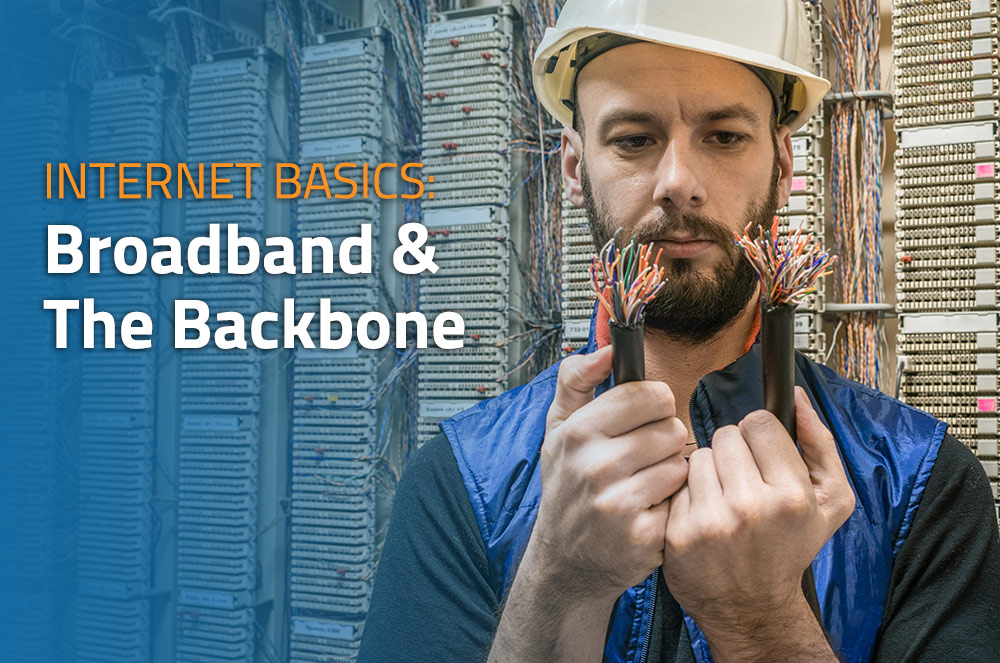
What does “Broadband” Mean and What is the “Backbone” of the Internet?
Straight Talk on How Your Internet Works – #AskOasisInternet
Living in the technology saturated modern-day world I’m sure you’ve heard terms such as broadband, fixed wireless and cable internet thrown around, but when it comes to truly understanding how your internet works, many of us are often at a loss for what these terms actually mean. How can we search for the answer to any question on the internet from the comfort of our own living rooms and receive millions of answers within seconds? Let’s take a deeper look at what broadband internet is and how it works.
Q: What does “Broadband” Mean?
A: Before we look at how the internet works, it is important to understand what the term “broadband” even means. “Broadband” was a term adopted in the 90s to mean “faster than dial-up” internet. It technically means using a wide bandwidth so lots of data moves at the same time as compared to narrow band communications like Dial-up, which is 4 khz wide. It was originally used to describe DSL, which in contrast to Dial-up, uses 100s of khz. Today, however, all methods used to distribute the Internet use a much wider (or broader) bandwidth than dial-up. In fact, the definition of broadband is changing as DSL no longer has the ability to carry enough data in most cases to qualify as broadband, but instead has been replaced with many other forms of broadband such as coaxial cable, several kinds of wireless and fiber optic lines direct to the home.
Q: What is the “Backbone” of the internet?
A: Now that we understand what “broadband” means, let’s take a look at the backbone of broadband service. Let’s think of this structural backbone as a road system. Just like interstates run across the country, fiber optic cables transport electromagnetic pulses across the country and around the world. These cables are the interstates of the Internet. The pulses transferred by the fiber optic cables are then converted into radio waves through points of presence (or Pops)- which are essentially access points to the Internet. Once these signals are converted into radio waves they can travel wirelessly and provide convenient access to people in many different locations.
But it hasn’t reached your living room yet! Next these radio waves are sent to ‘relays’ or antennas that pick up the radio waves and transport them closer to consumers’ locations. In our road metaphor, these are the roads that connect to the highways but also run through smaller towns. In order for you to search for your favorite funny cat videos on the Internet or search for delicious dinner recipes, however, these signals have to be transferred to your house or business. We can think of this step as the driveways that connect the roads in your town directly to your place of residence. These “driveways” are where Internet service providers (ISPs), like Oasis Broadband, connect to the backbone.
Now that the internet depends on ISPs to deliver customers internet service, there are lots of factors to consider, including which method of transmission they use, and what is the most cost effective and viable method of transmission for your environment. Oasis uses different means of transmission depending on your location and needs. If you are curious about our Broadband Internet packages, enter your zipcode here to find the Oasis Broadband Services available for your location.